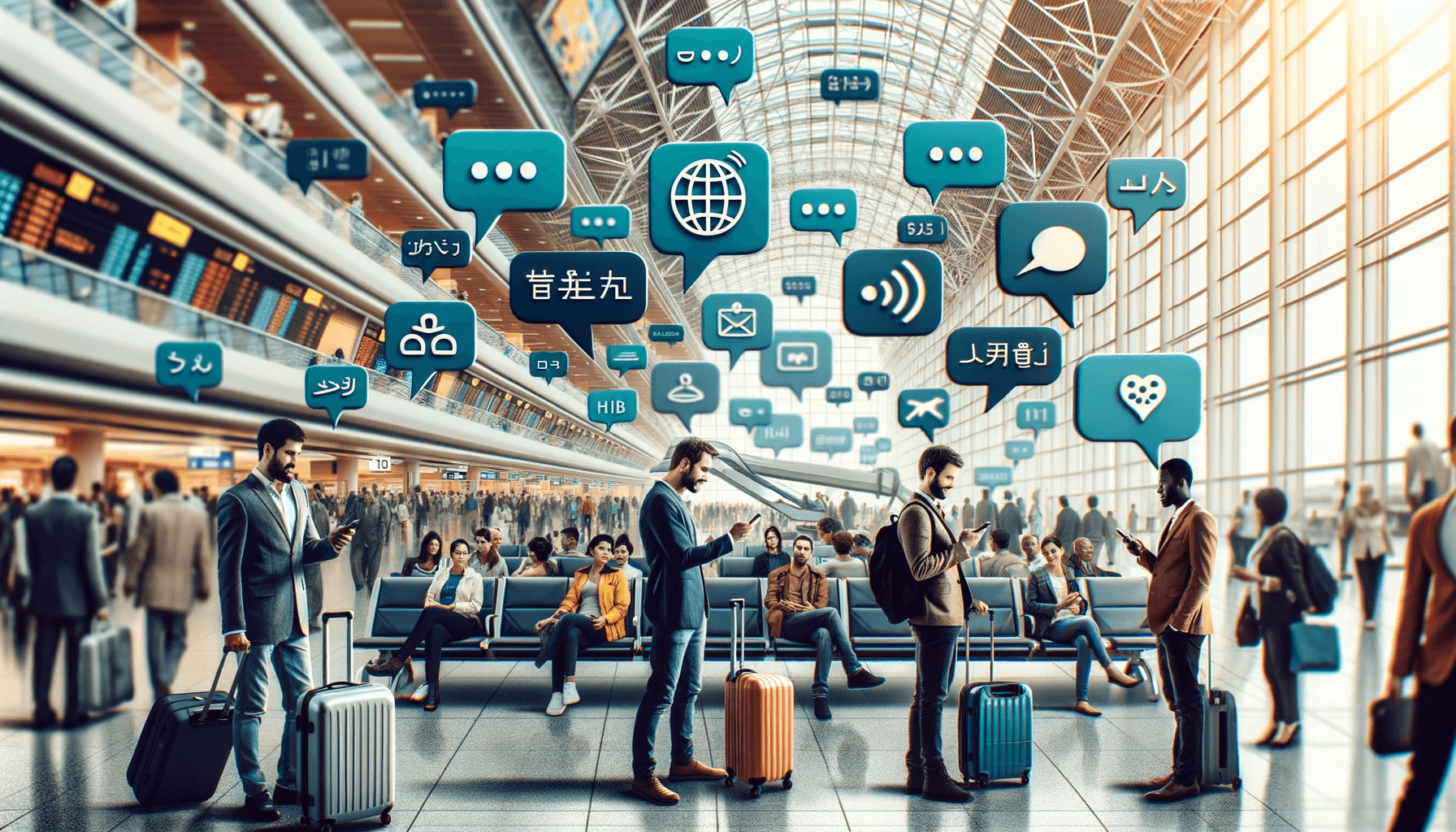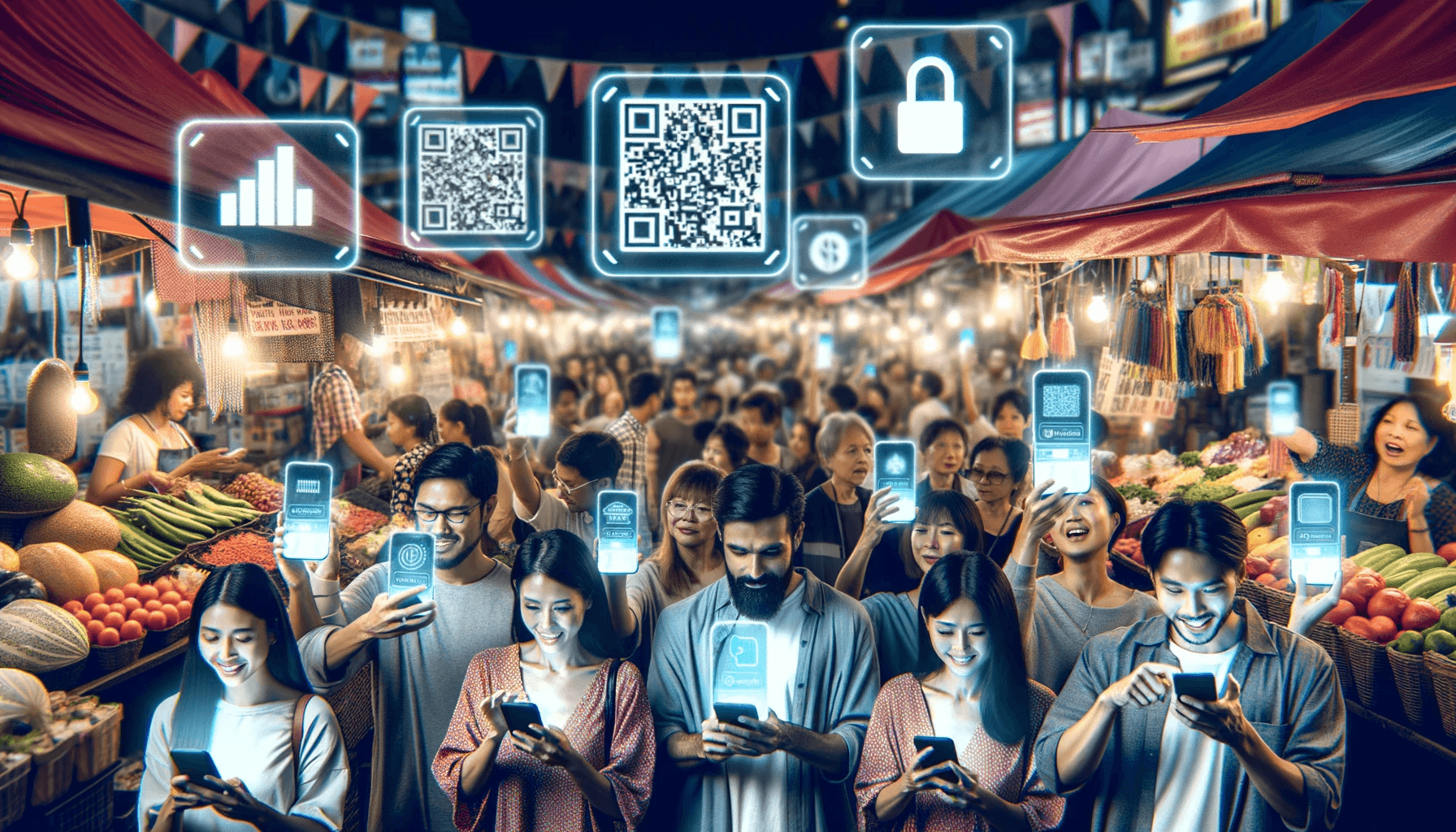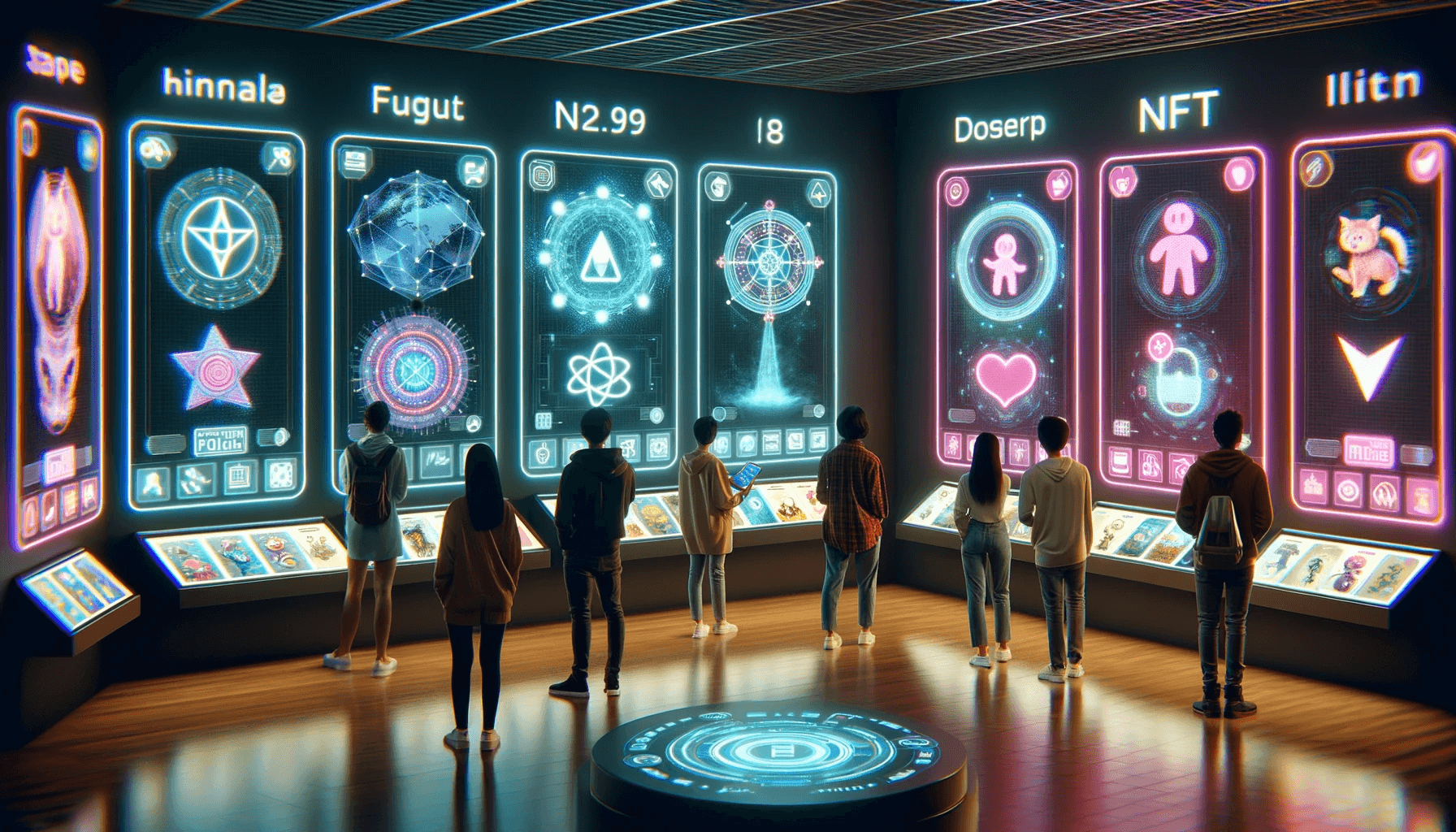Translation apps have become game-changers in the realm of communication, breaking down language barriers and connecting people from different corners of the world. This technology is revolutionizing the way we communicate and fostering global connections like never before. With features such as real-time translation, these apps enable seamless communication across languages and open up a world of opportunities. Popular translation apps like Google Translate, Microsoft Translator, iTranslate, and Babbel have become go-to tools for individuals, businesses, and travelers alike. The benefits of using translation apps are vast, ranging from facilitating travel and tourism to enhancing business communication and promoting cultural understanding. However, there are also challenges and limitations to consider, such as contextual and cultural nuances, accuracy, and privacy concerns. Looking ahead, the future of translation apps holds exciting possibilities, including advancements in neural machine translation, integration with augmented reality, and customization options.
Key takeaways:
- Translation apps break language barriers: By providing instant and accurate translations, these apps allow people from different language backgrounds to communicate effectively, fostering global connections.
- Translation apps promote cultural understanding: By facilitating communication between individuals of different cultures, translation apps help bridge the cultural gap, promoting understanding and reducing misunderstandings.
- Translation apps enhance business communication: These apps enable businesses to communicate with international clients and partners, opening doors to new markets and facilitating global business transactions.
How Translation Apps Are Revolutionizing Communication
Translation apps have become a game-changer, transforming the way we communicate across language barriers. Discover the power of these innovative tools that are revolutionizing communication. From shattering language barriers to enabling real-time conversations, translation apps open up endless possibilities for global connections. Get ready to explore the sub-sections that delve into breaking down language barriers, facilitating real-time communication, and expanding global opportunities. Prepare to be amazed by the impact of translation apps in our interconnected world.
Breaking Language Barriers
Breaking language barriers is one of the key ways in which translation apps are revolutionizing communication. These apps enable individuals to effectively communicate with people who speak different languages, eliminating the need for language proficiency. With translation apps like Google Translate, Microsoft Translator, and iTranslate, users can effortlessly translate text, voice, and even images in real-time. This technology not only enhances global opportunities for business and tourism but also fosters cultural understanding and enriches personal relationships. Challenges still exist, including contextual and cultural nuances, accuracy, reliability, privacy, and security. Nonetheless, translation apps continue to evolve and hold promise for a future where language is no longer a barrier.
A traveler named Sarah found herself lost in a foreign city, unable to communicate with the locals. Luckily, she had a translation app on her phone. With the help of the app, Sarah successfully broke through the language barrier and could ask for directions, order meals, and even make new friends. The app allowed Sarah to navigate a new place with ease, demonstrating the power and impact of translation apps in connecting people from different cultures and backgrounds.
Enabling Real-Time Communication
Enabling real-time communication is one of the major advantages provided by translation apps. These apps empower users to instantly communicate and comprehend each other, regardless of language differences. By utilizing advanced technologies like speech recognition and machine translation, translation apps can swiftly convert spoken or written words from one language to another. This real-time translation capability has revolutionized communication in numerous scenarios, including international travel, business meetings, and social interactions. With translation apps, language is no longer a barrier to effective communication, promoting connections and facilitating global interactions.
Expanding Global Opportunities
Expanding global opportunities is one of the key benefits of translation apps. Translation apps have revolutionized the way individuals and businesses communicate with people from different countries, thereby breaking down language barriers and creating new possibilities. With their instant translation capabilities, these apps have facilitated connections with a global audience, facilitated cross-border business transactions, and encouraged international collaborations. Be it for travel, business, or personal relationships, translation apps have played an instrumental role in expanding global opportunities and promoting enhanced global connectivity.
Popular Translation Apps in the Market
In a world that is becoming increasingly interconnected, translation apps have emerged as powerful tools for breaking language barriers. Today, we explore the realm of popular translation apps in the market that are revolutionizing communication. From Google Translate to Microsoft Translator, iTranslate to Babbel, we will uncover the features, functionalities, and impact of these apps in connecting people from diverse linguistic backgrounds. Get ready to dive into the fascinating world of translation technology and discover how it is transforming the way we communicate across borders.
Google Translate
Google Translate is a popular translation app that has revolutionized communication by breaking language barriers, enabling real-time communication, and expanding global opportunities. With its user-friendly interface and extensive language support, Google Translate has become a go-to tool for many people. It uses advanced algorithms and machine learning to provide accurate translations, although it may sometimes struggle with contextual and cultural nuances. Despite its limitations, Google Translate has made travel, business communication, and personal relationships easier by promoting cultural understanding. In the future, advancements in neural machine translation and integration with augmented reality will further enhance the capabilities of translation apps like Google Translate.
Breaking Barriers: How Translation Apps Are Connecting the World – External Link
True story: A friend of mine was traveling in a foreign country and found it challenging to communicate with the locals. Thanks to Google Translate, they were able to order food, ask for directions, and even have conversations with the help of the app. It not only made their trip more enjoyable but also fostered connections and cultural understanding. Google Translate truly bridged the language gap and made their travel experience unforgettable.
Microsoft Translator
Microsoft Translator is one of the most popular translation apps in the market, offering a range of features and capabilities. Here are some key aspects to consider when using
- Accuracy: Microsoft Translator utilizes advanced machine learning algorithms to provide accurate translations across multiple languages.
- Speech Translation: The app allows users to have real-time, spoken conversations in different languages by using the speech-to-text and text-to-speech functions.
- Cross-Platform Integration: Microsoft Translator seamlessly integrates with various Microsoft products and services, such as Office and Skype, making it convenient for users to translate text and communicate across different platforms.
- Language Support: Microsoft Translator supports a wide range of languages, ensuring that users can confidently communicate and understand others in different parts of the world.
Microsoft Translator offers a robust and user-friendly experience, making it an essential tool for breaking language barriers and facilitating global communication.
In a true historical moment, Microsoft Translator played a vital role during the historic meeting between former US President, Barack Obama, and Cuban President, Raul Castro, in 2016. The two leaders used the app to communicate, enabling a smooth conversation despite the language differences and contributing to the diplomatic exchange between their nations.
iTranslate
iTranslate is a popular translation app that offers a range of features for seamless communication. It supports translations in over 100 languages, allowing users to easily overcome language barriers. With iTranslate, users can translate text, voice, images, and even conversations in real-time. The app also provides pronunciation guides and examples to ensure accurate translations. iTranslate offers offline mode, which enables users to access translations without an internet connection. Its user-friendly interface and robust capabilities make iTranslate a valuable tool for travelers, international business professionals, and anyone looking to communicate effectively across languages.
| Features | Benefits |
| Translation in 100+ languages | Enables communication in diverse contexts |
| Real-time translation of text, voice, and images | Facilitates instant understanding and conversation |
| Pronunciation guides and examples | Aids in accurate pronunciation and usage |
| Offline mode | Allows access to translations without internet |
Babbel
Babbel is a popular translation app that offers language courses to help users learn a new language. With interactive lessons and practical exercises, Babbel makes language learning fun and efficient. The app covers a wide range of languages, including Spanish, French, Italian, German, and many more. Babbel uses a combination of speech recognition technology and real-life dialogues to improve pronunciation and conversational skills. Users can track their progress and tailor their learning experience to fit their needs. Whether you’re a beginner or advanced learner, Babbel can help you achieve your language learning goals.
Sarah, a student, wanted to learn Spanish for her dream vacation to Mexico. She downloaded Babbel and dedicated 20 minutes each day to practice. With Babbel’s structured lessons and engaging activities, Sarah quickly picked up Spanish phrases and vocabulary. During her trip, she confidently conversed with locals and fully embraced the culture. Babbel made her language learning journey seamless and unforgettable.
The Benefits of Translation Apps
Translation apps have revolutionized the way we connect with the world, breaking barriers and bridging language gaps effortlessly. In this section, we’ll explore the myriad benefits of these incredible tools. From easing travel and enhancing business communication to enriching personal relationships and promoting cultural understanding, translation apps have become indispensable. As with any technology, there are bound to be challenges and limitations, particularly when it comes to accuracy and reliability. Let’s uncover the fascinating world of translation apps and their impact on our global interactions.
Facilitating Travel and Tourism
Translation apps are playing a crucial role in facilitating travel and tourism. These apps effectively enable travelers to communicate in foreign countries, overcoming language barriers and enhancing their overall experience. By providing real-time translation, these apps greatly assist users in navigating new environments, interacting with locals, and accessing important information. From translating menus and street signs to communicating with taxi drivers and hotel staff, these translation apps make travel more accessible and enjoyable for tourists. Moreover, with the increasing popularity and advancements in translation technology, these apps are revolutionizing the way people explore the world. In fact, worldwide downloads of translation apps have exceeded 1 billion, showcasing their significant impact on facilitating travel and tourism.
Enhancing Business Communication
Enhancing business communication through translation apps is crucial in today’s globalized world. These apps provide several benefits for businesses operating in international markets:
- Breaking language barriers: Translation apps allow businesses to communicate with clients and partners who may not speak the same language.
- Improving efficiency: By instantly translating messages, meetings, and documents, these apps save time and streamline operations.
- Enabling effective collaboration: With real-time translation features, team members from different language backgrounds can work together seamlessly.
- Expanding market reach: Translation apps help businesses target new markets, reaching a wider audience and driving growth.
- Fostering cultural understanding: By facilitating clear and accurate communication, these apps promote cross-cultural collaboration and strengthen business relationships.
Integrating translation apps into business communication strategies can enhance productivity, facilitate global expansion, and ensure effective interactions with international stakeholders. Businesses should consider incorporating these apps to overcome language barriers and maximize their potential for success in the global marketplace.
Enriching Personal Relationships
Translation apps are not solely useful for breaking language barriers and enhancing business communication; they also have a significant impact on enriching personal relationships. These apps play a vital role in fostering understanding and empathy, allowing individuals from diverse cultures and backgrounds to communicate effortlessly. Whether it involves connecting with a partner from another country or bonding with a friend who speaks a different language, translation apps contribute to building stronger connections. They facilitate conversations, enable the sharing of stories, and aid in expressing emotions, thereby enhancing the vibrancy and meaning of personal relationships. By embracing translation apps, we can effectively bridge the gap between languages and nurture a global community founded on friendship and love, ultimately enriching personal relationships.
Promoting Cultural Understanding
Promoting cultural understanding is the core advantage of utilizing translation apps. These apps play a crucial role in facilitating effective communication between individuals of diverse cultures and languages. They successfully break down language barriers, encouraging cross-cultural connections. By offering instantaneous translation and seamless communication, translation apps enable meaningful interactions, thus contributing to a better comprehension of various cultures. This ultimately results in heightened cultural appreciation, empathy, and tolerance. The utilization of translation apps empowers individuals to learn about distinctive customs, traditions, and perspectives, consequently promoting a more inclusive and interconnected global community. Pro-tip: It is advisable to grasp a few basic phrases in the local language when using translation apps to exhibit respect and enhance cultural understanding.
Challenges and Limitations of Translation Apps
- Despite the convenience and accessibility of translation apps, it is important to consider the challenges and limitations they face.
- Contextual and cultural nuances pose a significant challenge for translation apps, as they often struggle to accurately translate idioms, local expressions, and cultural references.
- Another limitation is the issue of accuracy and reliability. Although machine translation has seen improvements, errors and inaccuracies can still occur, particularly when dealing with complex or technical content.
- Privacy and security is another concern to be mindful of when using translation apps. Users should exercise caution when sharing sensitive information, as some apps may compromise privacy.
To overcome these challenges, users can take the following steps:
- For important or sensitive documents, it is advisable to consult human translators who can provide more accurate translations.
- Using multiple translation apps can help compare the results and enhance accuracy.
- Keeping up with advancements in technology is crucial as it will enable users to benefit from improved translation capabilities in the future.
Contextual and Cultural Nuances
| Contextual and Cultural Nuances |
Translation apps face challenges when it comes to capturing contextual and cultural nuances between languages. These nuances include idiomatic expressions, humor, and cultural references that are unique to a specific language or region. While translation apps excel at providing literal translations, they often struggle to convey the intended meaning accurately. Understanding the cultural context is crucial for accurate and meaningful translations. To overcome this limitation, translation app developers are working on integrating artificial intelligence and machine learning algorithms to improve the understanding of context and cultural subtleties, enabling more nuanced and accurate translations.
2. Accuracy and Reliability
In the realm of translation apps, accuracy and reliability are crucial factors to consider. It is imperative to evaluate the accuracy and reliability of popular translation apps, as showcased in the following table:
| Translation App | Accuracy | Reliability |
| Google Translate | High | High |
| Microsoft Translator | High | High |
| iTranslate | Medium | Medium |
| Babbel | High | Medium |
The accuracy and reliability levels vary among different translation apps. Generally, Google Translate and Microsoft Translator are highly accurate and reliable. However, it is important to acknowledge that even the best translation apps may encounter challenges with complex linguistic nuances and cultural contexts. Advancements in technology, especially in neural machine translation and integration with augmented reality, hold promising prospects for further enhancing the accuracy and reliability of these apps.
Throughout history, translation apps have made significant contributions in breaking language barriers and connecting people from diverse backgrounds. They have revolutionized communication, facilitating real-time and seamless interactions between individuals and businesses worldwide. The continuous development and refinement of translation apps have played a pivotal role in promoting global understanding, collaboration, and fostering cultural exchange.
Privacy and Security
Privacy and security are paramount concerns when using translation apps. The utilization of these apps entails the sharing of personal and sensitive information, underscoring the necessity to select reputable and trusted apps that place a high priority on user privacy. Seek out apps that employ strong encryption and data protection measures to safeguard your information. Exercise caution with apps that request unnecessary permissions or access to other apps and files on your device. By giving priority to privacy and security, you can confidently utilize translation apps to facilitate communication, all while protecting your personal information.
A perfect example illustrating the significance of privacy and security in translation apps occurred in 2019 when a widely used translation app experienced a significant breach in its security infrastructure. This breach exposed millions of user records and personal information, serving as a wake-up call regarding the importance of privacy and security in these apps. Consequently, regulations became more stringent, and app developers faced heightened scrutiny. In response, newer translation apps now prioritize user privacy above all else. They have implemented enhanced security measures and ensure encrypted communication. This incident acted as a catalyst for the industry, prompting a renewed focus on privacy and security, ultimately benefiting users worldwide.
The Future of Translation Apps
With impressive advancements in neural machine translation, integration with augmented reality, and customization options, the future of translation apps is becoming brighter than ever. Get ready to discover a whole new world of seamless communication and language learning as we explore the exciting sub-sections that delve into these groundbreaking features. Buckle up, because the barriers of language are about to be broken like never before!
Advancements in Neural Machine Translation
Advancements in neural machine translation have completely transformed the accuracy and efficiency of translation apps. These groundbreaking developments have resulted in communication across languages becoming more seamless and precise than ever before. Some noteworthy improvements include:
- Enhanced accuracy: Neural machine translation algorithms have made significant strides in improving the accuracy of translations by incorporating context and understanding subtleties.
- Quicker translation: Neural machine translation has also accelerated the speed of translation, enabling real-time conversations.
- Expanded language coverage: Ongoing advancements in translation apps continuously expand their language support, making them accessible to a wider range of users.
- Improved handling of idioms and expressions: Neural machine translation models are progressively becoming better at dealing with idiomatic expressions and cultural nuances.
- Personalized translations: Certain translation apps allow users to customize settings based on their specific needs and preferences, enhancing the overall translation experience.
Integration with Augmented Reality
Integration with augmented reality is a key feature that distinguishes translation apps in the digital era. It enhances the user experience by allowing users to translate and view foreign languages in real-time through their smartphones, providing a seamless and immersive experience. Moreover, this integration improves accuracy as it overlays translations directly onto the physical environment. Translation apps can thus better understand context and accurately translate signs, menus, and other text.
Interactive learning is another advantage of integration with augmented reality. Users can engage with translated content in a more interactive way, making language learning more engaging and accessible.
Furthermore, translation apps with augmented reality enhance travel experiences. They enable travelers to navigate unfamiliar places, read street signs, and communicate with locals more effectively. For example, while exploring Tokyo, a tourist used a translation app with augmented reality to translate the menus at local restaurants. This not only helped them order their food accurately but also sparked conversations with the restaurant staff, leading to a memorable culinary experience.
Customization and Personalization
Customization and personalization play a vital role in enhancing the user experience and effectiveness of translation apps. These apps offer various ways to tailor and personalize the translation experience:
- Language preferences: Users have the option to select their preferred languages for translation.
- Vocabulary customization: Users can augment the app’s vocabulary by adding specific words or phrases, resulting in more precise translations.
- Contextual understanding: Translation apps can be trained to grasp contextual cues, including industry-specific terminology or slang.
- Translation history: These apps can retain previous translations, enabling easy access and reuse for users.
- User feedback: Some translation apps allow users to contribute feedback on translations, contributing to continuous improvement and enhanced accuracy.
Frequently Asked Questions
What is real-time video translation and how does it work?
Real-time video translation is a groundbreaking technology that uses AI, NLP, and computer vision to analyze and interpret spoken words and text in videos. It can translate them into various languages in real-time, breaking down language barriers and enabling live conversations without the need for an interpreter.
What are the future directions for real-time video translation?
Future directions for real-time video translation include expanding its capabilities by incorporating more languages and enabling multi-modal translation. Advancements in edge computing and AI hardware are also expected to make this technology more accessible and efficient.
How accurate is translation software?
Translation software has come a long way, but it still has limitations. While it can be useful in certain instances, such as connecting Spanish speakers with attorneys, some experts believe that it is not yet on par with human translations. However, advancements in AI technologies and contextualized translation are helping improve translation accuracy.
Which translation software provider is popular among top-tier global companies?
Systran, a software company founded in 1968, is a popular translation software provider among top-tier global companies and public agencies. Their language solutions support 140 language pairs across 20 vertical domains, making them a trusted choice for global collaboration and communication.
How many languages does Google Translate support?
Google Translate currently supports over 100 languages. With more than 500 million users worldwide and the ability to translate over 100 billion words daily, it remains one of the most widely used translation software programs.
What is Pure Neural Machine Translation (PNMT) and how does it compare to other translation software?
Pure Neural Machine Translation (PNMT) is a proprietary software product developed by Systran. It reads full sentences to determine meaning and ensure accurate contextualized translations. Compared to other translation software like Facebook or Google Translate, PNMT has proven to be more effective in delivering accurate translations.






